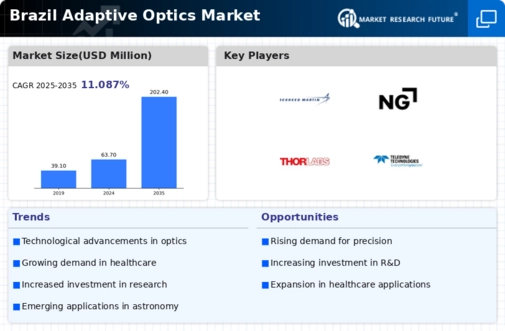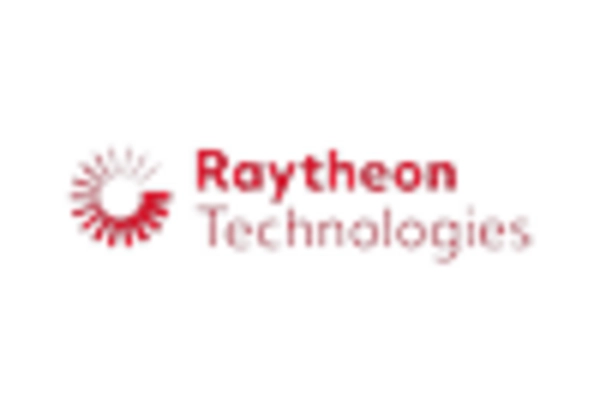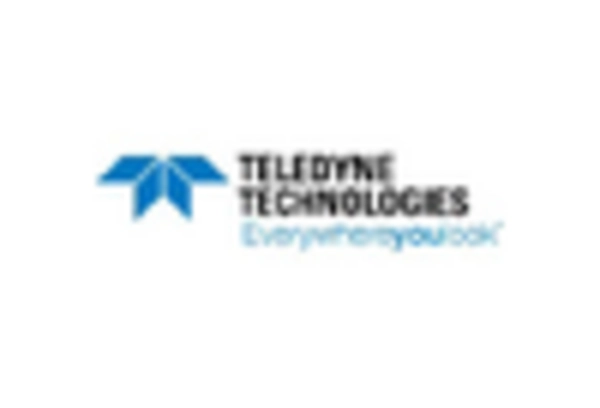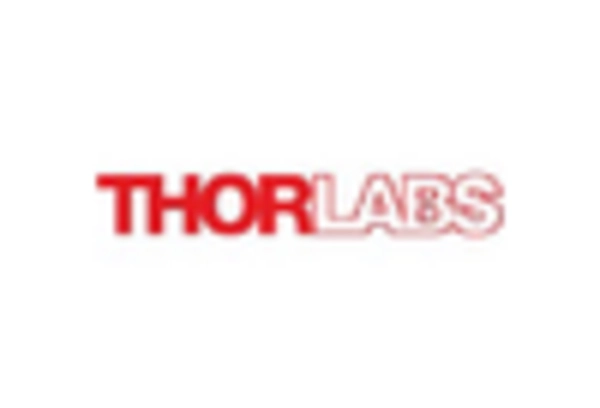Rising Demand in Healthcare
The adaptive optics market in Brazil is experiencing a notable surge in demand, particularly within the healthcare sector. This growth is largely attributed to the increasing prevalence of eye disorders and the need for advanced imaging techniques. The Brazilian healthcare system is progressively adopting adaptive optics technologies to enhance diagnostic capabilities, which is expected to drive market expansion. Reports indicate that the healthcare segment could account for approximately 30% of the overall adaptive optics market by 2026. Furthermore, the integration of adaptive optics in ophthalmology is anticipated to improve patient outcomes, thereby fostering further investment in this technology. As Brazil's population ages, the demand for precise and effective diagnostic tools will likely continue to rise, positioning the adaptive optics market as a critical component of the healthcare landscape.
Increased Awareness and Adoption
Increased awareness and adoption of adaptive optics technologies among Brazilian consumers and businesses are driving the market forward. As knowledge about the benefits of adaptive optics spreads, more sectors are exploring its potential applications. This trend is particularly evident in fields such as healthcare, telecommunications, and manufacturing, where the advantages of enhanced imaging and precision are becoming more recognized. Market surveys suggest that consumer awareness of adaptive optics has risen by approximately 40% in the past two years, indicating a growing interest in these technologies. As businesses seek to improve their operational efficiency and product quality, the adaptive optics market is likely to see a corresponding increase in demand. This heightened awareness is expected to catalyze further investments and innovations, solidifying the market's position in Brazil.
Expanding Industrial Applications
The adaptive optics market in Brazil is witnessing an expansion in industrial applications, particularly in sectors such as manufacturing and telecommunications. Industries are increasingly recognizing the potential of adaptive optics to improve precision in processes such as laser machining and optical communications. The integration of adaptive optics technologies can enhance the quality of products and reduce operational costs, making them attractive to Brazilian manufacturers. It is estimated that the industrial segment could represent around 25% of the adaptive optics market by 2026. As Brazilian industries strive for greater efficiency and competitiveness, the adoption of adaptive optics is likely to accelerate, further driving market growth. This trend indicates a shift towards more sophisticated manufacturing processes, where precision optics play a crucial role.
Educational and Research Institutions
Educational and research institutions in Brazil are becoming increasingly involved in the adaptive optics market, contributing to its growth through innovation and knowledge dissemination. Universities and research centers are conducting studies and developing new applications for adaptive optics, which is fostering a culture of technological advancement. Collaborations between academia and industry are expected to enhance the capabilities of adaptive optics systems, leading to novel applications in various fields. The involvement of these institutions is likely to increase the market's visibility and attract investment. By 2026, it is anticipated that educational institutions could contribute to approximately 15% of the adaptive optics market, as they play a vital role in training the next generation of professionals and researchers in this field. This synergy between education and industry is crucial for sustaining long-term growth.
Investment in Research and Development
Investment in research and development (R&D) is a pivotal driver for the adaptive optics market in Brazil. The Brazilian government, alongside private entities, is increasingly allocating funds to foster innovation in optical technologies. This commitment to R&D is expected to yield advancements in adaptive optics systems, enhancing their performance and applicability across various sectors. In 2025, it is projected that R&D expenditures in optical technologies could reach approximately $200 million, reflecting a growing recognition of the importance of these technologies. The adaptive optics market stands to benefit significantly from these investments, as enhanced systems may lead to new applications in fields such as astronomy and telecommunications. Consequently, the focus on R&D is likely to stimulate market growth and position Brazil as a competitive player in the adaptive optics landscape.

















Leave a Comment